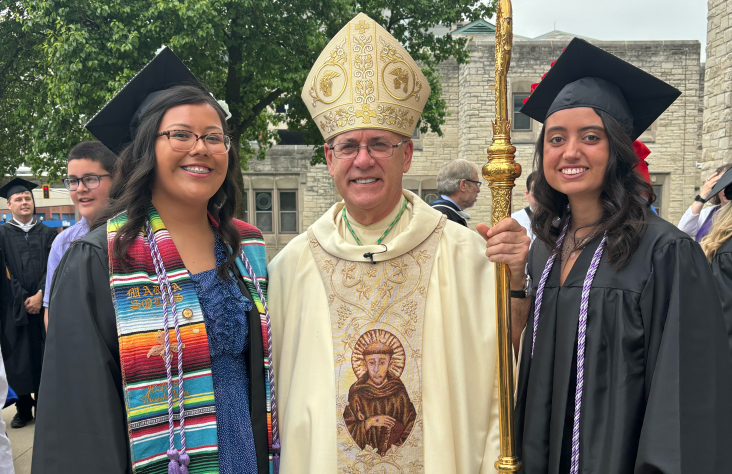April 4, 2012 // Uncategorized
He lives!
Easter
Jn 20:1-9
Actually, a variety of biblical readings occurs in the course of liturgical celebrations for Easter. For instance, the Liturgy of the Word for the Easter Vigil is unsurpassed among all the feasts of the year.
These reflections center upon the readings for the Eucharist celebrated during the day on Easter itself.
The first reading is from the Acts of the Apostles. As this season continues, most often the Church will draw from Acts its first Scriptural reading. In this reading, Peter addresses a crowd. His sermon, one of several in the early chapters of Acts, capsulized the Gospel message. Jesus is Lord. John the Baptist foretold the coming of Jesus. Jesus was the gift and representative of God. Jesus died on Calvary for the sins of all humanity.
After dying on Calvary, Jesus rose and was seen by witnesses. The Lord commissioned the surviving Apostles to proclaim the Gospel as they went into places far and near.
The reading, while crisp and not too long, focuses attention upon the Lord. The Crucifixion redeemed the world. Then, Jesus rose from the dead. The Resurrection is more than a pious assertion of some vague, unearthly way to say that the Lord’s power endures from age to age through Christianity and its adherents.
Jesus rose from the dead in time and space. Witnesses actually saw the Risen Lord.
St. Paul’s First Epistle to the Corinthians provides the second reading. Paul calls the Corinthian Christians to turn to Jesus. They are with the Lord. The Lord is with them. Such is the effect of the Incarnation, of the Redemption and of the personal decision to turn to God.
The Gospel of John furnishes the last reading. It is a triumphant story, and any reading of this Gospel passage reveals the excitement in which it was written, as well as the sense that the Resurrection of Jesus was an event utterly unique in earthly history.
Mary Magdalene, forever faithful, discovered that the tomb is empty. She immediately alerted Peter and the other Apostles to her discovery.
Peter and the Beloved Disciple hurried to see for themselves. The Beloved Disciple saw the empty tomb and remembered the Lord’s prophecy of rising from the dead.
Reflection
This weekend, in celebrating Easter, the Church rejoices in the greatest triumph of Jesus over death and evil. He lives!
The Church calls us to be joyful, telling us not to fear death. Death has been defeated. We can live eternally. The key to life eternal is in our love for God.
The second reading, that of Paul’s first letter to Corinth, firmly and clearly reminds us that the Lord’s Resurrection, a spectacular occurrence at a given moment in history and at a particular place, has profound implications for each human being anywhere and at any time.
St. Paul was justifiably, and totally, taken with the realization that through the Incarnation, the fact that in the one person of Jesus the nature of God and human nature coexist, all we humans commune with God — if we turn ourselves to God willingly and truly.
These readings are very instructive for us. Jesus, of course, is central. His wondrous Resurrection is the great event proclaimed and celebrated.
Yet, references to human beings fill the story. Today, these human beings are seen in retrospect. Most are saints, highly venerated persons. In their humanity, however, they were as we are.
They present us with an image of great faith and of hope. Are we able to manifest the same? Do we hold dear in our hearts the faith that was so vivid among them?
Only if we are of the same strong faith can we too thrill with the Church in declaring, “He lives!”
The best news. Delivered to your inbox.
Subscribe to our mailing list today.





